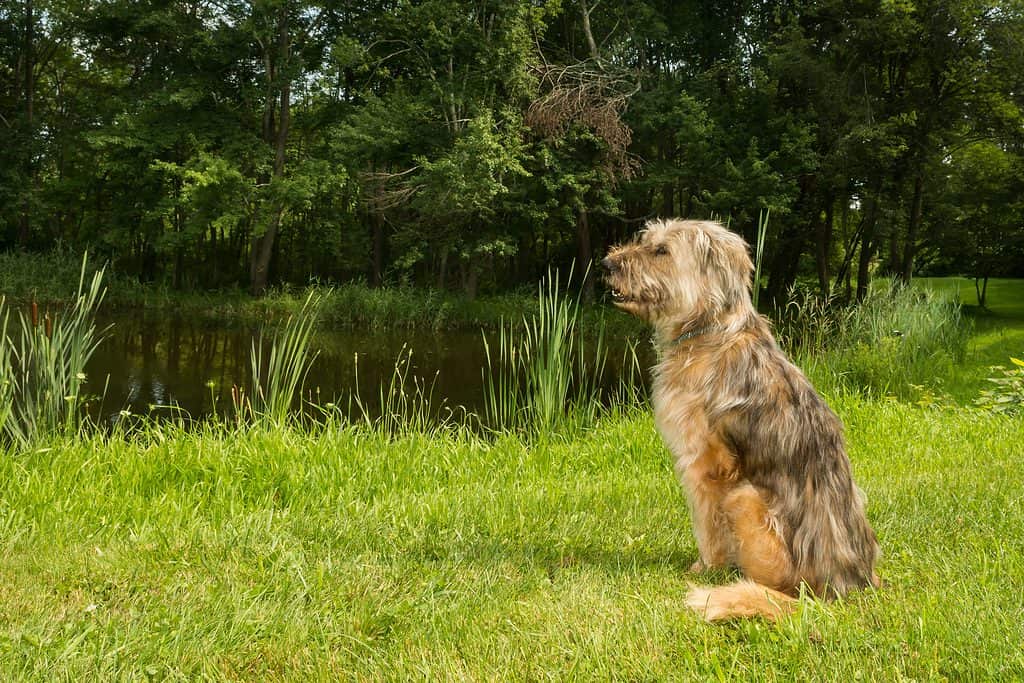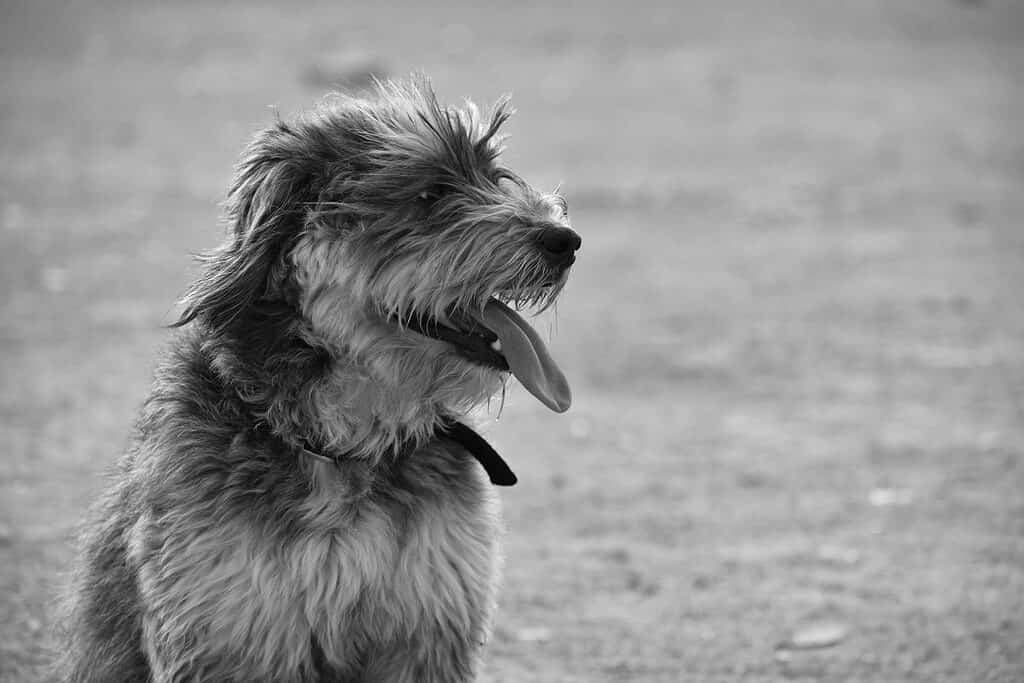Sapsali
Canis lupus
Natives know this breed as the "ghost hunter" because they believe these dogs can ward off evil spirits.
Advertisement
Sapsali Facts
- Name Of Young
- Puppy
- Fun Fact
- Natives know this breed as the "ghost hunter" because they believe these dogs can ward off evil spirits.
- Most Distinctive Feature
- Long, shaggy coat
- Other Name(s)
- Sapsaree
- Gestation Period
- 58-68 days
Sapsali Physical Characteristics
- Color
- Brown
- Grey
- Yellow
- White
- Cream
- Skin Type
- Fur
- Age of Sexual Maturity
- 6-9 months
- Age of Weaning
- 6 weeks
- Aggression
- Medium
Sapsali as a Pet:
- General Health
- Energy Level
- Shedability
- Trainability
- Intelligence
- Tendency to Chew
- Size
- Family and kid friendliness
- Yappiness / Barking
- Moderate
- Separation Anxiety
- Moderate
- Preferred Temperature
- Cold climate
- Exercise Needs
- Moderate
- Friendly With Other Dogs
- High
- Pure bred cost to own
- $300-$500
- Dog group
- Non-sporting
- Male weight
- 40-62 lbs
- Female weight
- 35-55 lbs
View all of the Sapsali images!
The sapsali also goes by the name sapsaree, which are medium-sized dogs that originated in Korea. Natives know this breed as the “ghost hunter” because they believe these dogs can ward off evil spirits. However, despite this ominous superstition, the sapsali is a good-natured and social dog. Additionally, they are very affectionate towards their loved ones.
These adorable dogs don’t have a historical purpose; they were always bred as companions, which is a role they thrive in. Furthermore, they are intelligent and easy to train, thus making them excellent therapy dogs. In fact, Korean hospitals use this breed to help emotional patients and children.
See all of our expert product reviews.
Pros and Cons of Owning a Sapsali
Every dog breed has pros and cons, and it’s important to know them before purchasing a canine companion. While people might be drawn to a specific breed, they may be too active or not get along with children. The sapsali is no exception, so here are their pros and cons:
| Pros | Cons |
|---|---|
| They are highly intelligent | Not the best breed for allergy sufferers |
| The sapsali is a healthy dog | They are not suited to apartment living |
| They are excellent watchdogs | The sapsali requires a lot of grooming |
| The sapsali is great with children | They like to roam, so they need a secure environment |
| They are a dog and cat-friendly breed | The sapsali sheds a lot |
| Great dogs for first-time owners | They might be overprotective of their family |
The Best Dog Food for a Sapsali
Sapsalis always need a diet of high-quality dry dog food, ideally mixed with broth, water, or canned food. In addition, these dogs can eat cooked eggs, cottage cheese, vegetables, and fruit. However, these foods should only make up 10% of their diet.
Sapsali puppies need excellent quality, brand-name puppy chow. Furthermore, feeding them human food is not good as it can cause teeth and bone problems, mineral and vitamin imbalances, and may cause your pup to become a picky eater or obese.
Sapsali Size and Weight
This breed is medium in size; males grow 20 to 23 inches tall and weigh 40 to 62 pounds when fully grown. Female sapsalis are smaller, reaching approximately 22 inches tall and weighing about 35 to 55 pounds.

The sapsali is a gentle breed that will fit into any family.
Health and Entertainment for your Sapsali
- The Best Dog Food for Labrador Retrievers (Senior, Puppy, and Adult)
- The Best Dog Food for Chihuahuas: Ranked and Reviewed
- Best Dog Food for Dogs With Diarrhea (Senior, Adult, and Puppy) — Reviewed and Ranked
- The Best Wet Food for Senior Dogs
- Victor Senior Healthy Weight Dog Food Review: Recalls, Pros, Cons, and More
See all of our expert product reviews.
©ufokim/Shutterstock.com
Sapsali Common Health Issues
The sapsali is considered a healthy breed, and they often live well over 10 years old. However, they are susceptible to a few health conditions, including:
Patellar Luxation
These dogs can easily dislocate their kneecaps. A sign of this injury is a few hopping steps before it re-sets itself. However, the knee joints might not reposition themselves if the damage is severe. Furthermore, the longer they have the injury, the more likely it is to result in osteoarthritis and pain.
Dermatitis
The sapsali is prone to atopic dermatitis and other skin conditions. However, owners can limit symptoms by ensuring their pup’s coats are in excellent condition and implementing preventative measures against parasite infestations.
Hip Dysplasia
Sapsalis are susceptible to hip dysplasia, and breeders will often test them for orthopedic conditions. Sadly, this condition will cause their hind limbs to become progressively lamer as they get older. Additionally, their malformed hip joints will be plagued by inflammation, and eventually, arthritis will set in.
Congenital Eye Defects
There are several eye defects seen in sapsalis; they include:
- Cherry eye – symptoms include an exposed bright red glad resulting from a prolapsed third eyelid
- Entropion – symptoms include eyelids that are abnormally folded inwards, so the eyelashes irritate the cornea
- Distichiasis – symptoms include an eyelash that grows inward, often scratching the cornea
Life Expectancy
Sapsalis have a relatively long lifespan as they are healthy dogs. If cared for properly, they can live as long as 10 to 12 years.
Sapsali Temperament
Sapsalis are notorious for their gentle and caring natures. However, they can be nervous around strangers and act out aggressively. But, if this breed senses their owners are comfortable around the stranger, they will usually accept them too. Furthermore, sapsalis are loyal and incredibly devoted to their loved ones and might sometimes be protective. And while they are friendly dogs, their full, loud bark generally intimidates people who aren’t familiar with the breed. Although these dogs are protective, they usually love children and make fantastic family pets. However, early socialization is needed to deter any behavioral issues or aggressiveness. In addition, sapsalis generally welcome other dogs to their home.

Sapsalis are incredibly loyal and caring dogs.
©Jay Ondreicka/Shutterstock.com
How to Take Care of a Sapsali
Taking care of a sapsali can be a lot of work. Not because they are challenging to handle but because of their grooming needs.
Grooming
Unfortunately, this breed has a particularly thick, double-layered coat that needs more grooming than most other breeds. While they don’t require regular bathing (only a few times a year), they do need daily brushing to keep their thick coats from tangling and matting. However, a quick brush won’t do the trick. Owners must spend some time combing out their coats because the outer layer can hide tangles or mats in the undercoat. Unfortunately, if these dogs aren’t appropriately groomed, their matted fur can cause skin damage and even infection. Also, great care should be paid to their hanging ears because if they procure too much moisture, it can cause ear infections.
Their teeth and nails need attention too. Owners need to use dog-friendly toothpaste to clean their sapsali’s teeth at least three times a week, and their nails need trimming every three months or when they touch the floor.

The sapsali has a thick double-layered coat that requires a lot of grooming.
©pranav_ritvik/Shutterstock.com
Training
The sapsali is a highly intelligent breed and a quick learner, making them super easy to train. Additionally, they are incredibly devoted to their owners and want to please their loved ones by performing any task asked of them. Furthermore, the best way to train these dogs is by positive reinforcement and non-confrontational methods, as they respond best to treats and praise. Lastly, they are adaptable dogs and do well in most homes, and they are perfect for first-time owners.
Exercise
While sapsalis are not as active as some other working breeds, they do still require a good amount of exercise. Breeders recommend at least 45 to 60 minutes of strenuous exercise daily. Additionally, sapsalis will also need mental stimulation because they are so bright. Therefore, these dogs will likely develop negative behaviors if they don’t receive the attention they deserve.
This breed is the perfect candidate for agility training, canine freestyle dance, or advanced obedience training, which are great outlets for their energy needs. While sapsalis aren’t considered the best apartment dogs, people can keep them in smaller homes without a yard if they have a busy daily schedule. However, they are happiest in a large house with lots of outdoor space.
Puppies
Female sapsalis usually have litters of four to seven puppies. These pups need socialization and training almost immediately if you want to avoid nervous behavior around strangers. Additionally, it will help them become well-adjusted adults.
Sapsali and Children
The sapsali is amazing with children and other pets if they grow up with them. However, they are powerful dogs and can be boisterous sometimes, so children should always be supervised around them. But, if sapsalis are socialized properly, they are loving, calm, and gentle, to the extent that Koreans use them as therapy dogs in their hospitals. For example, a little boy who had been bullied and beaten up was comforted by this empathetic canine while he was healing.
Sapsali Cost
Depending on the breeder, location, and pedigree, this breed’s price will differ. However, these adorable dogs generally cost between $300 to $500. But if you are purchasing a sapsali with an incredible bloodline, the cost will soar. Furthermore, breeders sometimes pre-train them for an additional fee.
Cost Per Year
Before going out and buying a sapsali, owners need to understand how much it costs to keep them alive, happy, and healthy. The initial purchase price is nothing compared to how much you will spend on them in the long run. For example, yearly expenses can include the following:
- Veterinarian care
- Food
- Shots
- Medication
- Toys
- Pet supplies like brushes, shampoo, clippers, etc
- Pet Insurance
On average, the annual cost for the upkeep of the sapsali is about $650.
Dogs similar to the Sapsali
If you want a sapsali but don’t have access to a breeder, there are two other breeds that are similar in size and personality. They include:
Australian Eskimo
The Australian Eskimo is a hybrid mix of the Australian shepherd and the American Eskimo dog. These dogs are primarily white with black or brown spotted or speckled markings. This breed has wavy fur; also, their hair can be relatively wiry, so frequent grooming is required to keep their coats in tip-top shape. In addition, they are moderate shedders.
These adorable pups get their herding instincts from their Australian shepherd genes, although their affectionate and playful nature makes them fantastic companions. But, if you are looking for a watchdog, Australian Eskimos are not the best choice because they barely bark. Furthermore, they are great with kids and other pets. However, they have an independent streak, so training might be tricky and require some patience.
Austrian Black and Tan Hound
The Austrian black and tan hound is notorious for its incredible sense of smell and stamina. They can run for miles if you let them as if they never tire. Therefore, they are not a suitable breed for apartment living. Additionally, these hounds will not do well in homes where the owners work all the time because they need a lot of daily exercise.
These dogs are black and tan in color, as their name suggests, and they are medium-sized dogs. People often mistake the Austrian black and tan hound for the similarly named black and tan coonhound. This breed weighs around 35 to 60 pounds, and males can reach heights of 20 to 22 inches. Female Austrian black and tan hounds are slightly smaller and measure around 19 to 21 inches.
Austrian black and tan hounds are very vocal and happy dogs, but they do get nervous around strangers. Luckily, they are not aggressive dogs and make fantastic companions for children.
Popular Names for a Sapsali
- Buddy
- Charlie
- Toby
- Jack
- Louie
- Duke
- Buster
- Bentley
- Riley
- Bailey
- Daisy
- Bella
- Chloe
- Luna
- Abbie
- Penny
- Lola
- Stella
- Ruby
- Penny
Up Next
View all 293 animals that start with SSapsali FAQs (Frequently Asked Questions)
Do Sapsali dogs shed?
Yes, sapsalis are heavy shedders.
Is the sapsali used as a therapy dog?
Korean hospitals use this breed as therapy dogs to help emotional patients and children.
Is the sapsali good with children?
The sapsali is amazing with children and other pets if they grow up with them. However, they are powerful dogs and can be boisterous sometimes, so children should always be supervised around them.
Thank you for reading! Have some feedback for us? Contact the AZ Animals editorial team.
Sources
- Pet Net ID, Available here: https://petnetid.com/breed/sapsali/sapsali-puppies-for-sale-sapsali-prices/
- Pet CareTips, Available here: https://animalcaretip.com/tips-for-taking-care-of-sapsali-pups/
- Pet Guide, Available here: https://www.petguide.com/breeds/dog/sapsali/

















